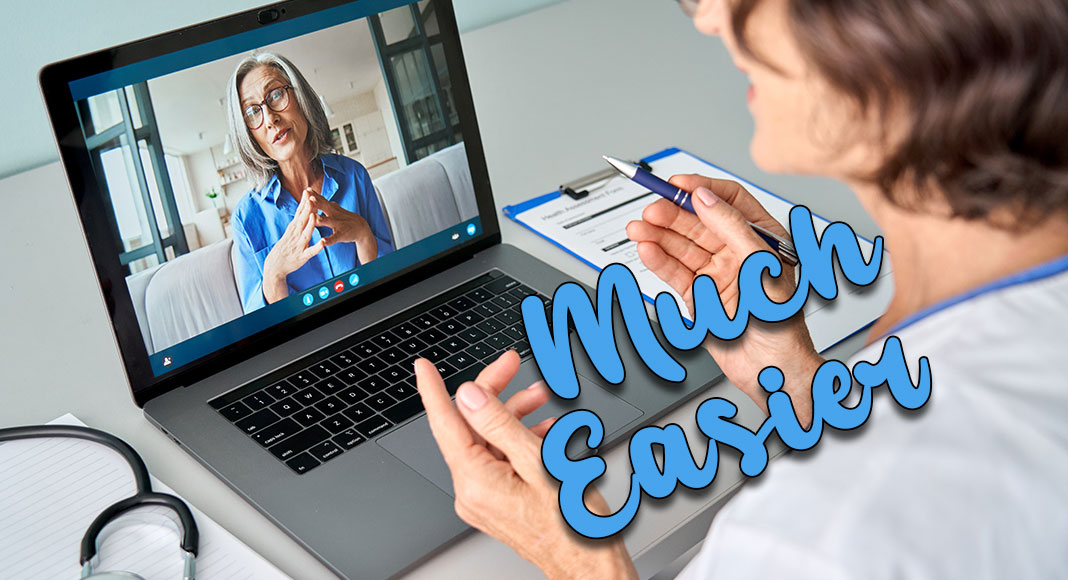
Mega Doctor News
Newswise – CHICAGO – Most patients who underwent laparoscopic appendectomy (surgical removal of the appendix) or cholecystectomy (surgical removal of the gallbladder) found virtual follow-up care more convenient than traditional in-person appointments, yet equally as satisfying, according to a study published as an “article in press” on the website of the Journal of the American College of Surgeons.
“Offering virtual visits allows us to care for more patients in new ways within the surgical world,” said lead study author Kristen Harkey, DNP, ANP-BC, a nurse practitioner in the department of surgery at Atrium Health Carolinas Medical Center in Charlotte, North Carolina. “It also makes patients more comfortable engaging with other health care providers virtually and possibly even seeking out virtual care.”
Virtual visits are real-time, video-based chats between patient and health care provider. Prior to the COVID-19 pandemic, video-based virtual appointments were expanding at-home options for patients needing follow-up surgical care. Researchers say that as surgeons shift to virtual visits for low-risk patients, it is important to evaluate the impact on patient satisfaction.
“Our understanding of factors that influence patient perception of having received person-centered care remains incomplete,” said senior study author Caroline Reinke, MD, FACS, associate professor of surgery, Atrium Health, Charlotte. “This is one of the first studies to assess patient perception of post-discharge virtual visits and to compare that with traditional in-person appointments.”
The study design was a mixed-methods analysis of patient satisfaction and convenience as part of a non-inferiority, randomized controlled trial. The analysis involved 289 patients, ages 18 to 90, who underwent laparoscopic appendectomy or cholecystectomy at two hospitals in Charlotte between August 2017 and March 2020. Patients were randomly assigned to two groups (virtual or in-person) and patient responses were analyzed by three groups: 135 virtual visits, 53 crossover visits (randomized to a virtual visit but crossed over to an in-person visit), and 101 office visits. There were no significant differences in demographics by groups.
Patient satisfaction and convenience were measured by a survey—11 multiple choice and two open-ended questions—sent to all patients via email immediately after their post-surgery visits. The analysis compared responses between face-to-face visits and virtual appointments.
Key findings
- Of the 289 patients who completed the postoperative visits, 127 responded to at least one open-ended question (72 virtual visit patients, 14 crossover patients, and 41 office visit patients). These statements provided a clearer picture of what their visit meant to them.
- Patients found virtual visits no different from face-to-face visits on measures of satisfaction. Patients reported that interactions with clinicians, quality of care, efficiency of the visit, and access to care were the reasons for their satisfaction.
- Respondents felt virtual visits were more convenient. Video appointments were seen as more efficient, enabling patients to complete their follow-up surgical care in the comfort of their home or even at work during a break, therefore eliminating travel and wait time.
- Of the respondents who participated in virtual visits, 78.8 percent said they would choose a virtual appointment for future follow-up care. Less than half of respondents who had office visits said they would choose in-person visits for that same care.
- Barriers were different for patients getting virtual care versus in-person care. Reasons patients did not like their virtual visits include technological difficulties logging on, navigating the app, and connection issues: 27.5 percent reported a technical issue with their virtual appointment.
- Challenges for patients completing in-person office visits included long commute times and difficulty finding the appointment location. Over half said they would choose a virtual visit or had no preference for future follow-up care.
“Our primary message is that patients can get excellent care at virtual or in-person visits. The virtual visit can be an amazing tool in the surgical care toolbox, but it’s not the right answer for all patients all the time,” Dr. Reinke said. “It’s really a patient-specific question and one that we can’t answer for them based on assumptions on what their preference might be.”
One study limitation is that non-English speakers were unable to use the platform. However, the team has since expanded the service to include interpreters for multiple languages. Another limitation is an entirely urban study population.
“The next questions are, ‘What are the disparities in utilization of virtual care?’ and ‘Is there a way to decrease those disparities?’” Dr. Reinke said. “It’s really a great opportunity to learn more about how to meet patients who reside in any setting in a way that is best for them.










